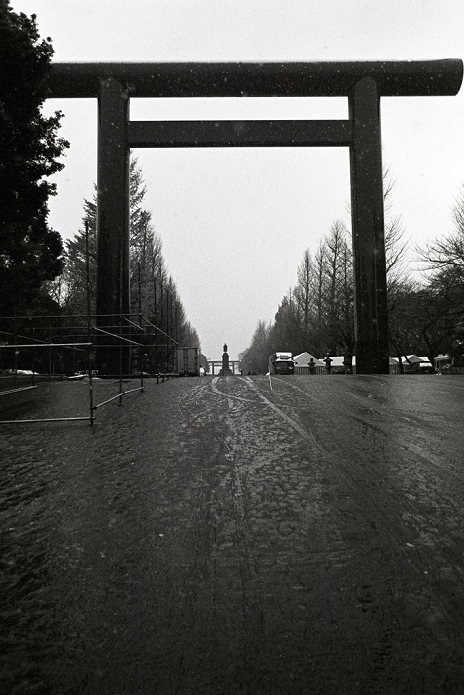
ED
Photo Reportage Yasukuni" as seen by foreigners
An O-torii 'great gate' marks the entrance to Yasukuni shrine in Tokyo's Kudanshita district Dec 29, 2004. In the Shinto religion 'torii' mark the start of scared places an entrance into the world of the divine. Passing under a torii is a means of purification along with the act of cleaning the mouth and hands so as to not defile the shrine. The gate is 25 metres tall and 35 metres wide it is one of the largest tori in Japan.Established in 1869 by the Meiji Emperor to commerate those who died in the Boshin War. The shrine now houses the souls or 'kami' of Japan's war dead including 14 A-class war criminals who were interned among the 2.5 million war dead in 1978. Visits to the shrine by Japanese Prime Ministers create tensions with Japan's Asian neighbors. (Photo by Bruce Meyer-Kenny/AFLO)
Details
ID
13939768
Collection
License type
Editorial
Photographer
Creation date
11-08-2011
Contact Aflo for all commercial uses.

More
Top Categories
